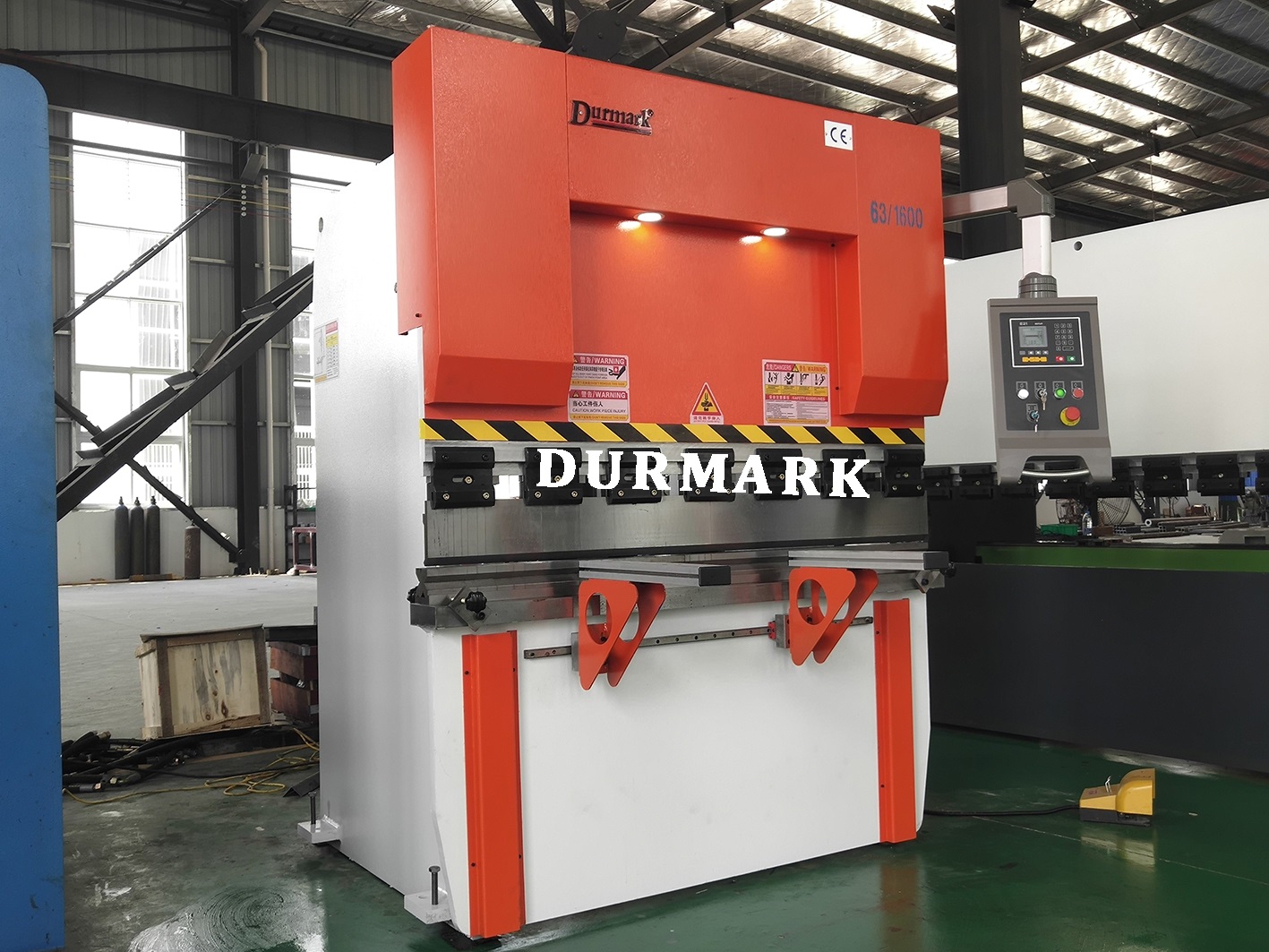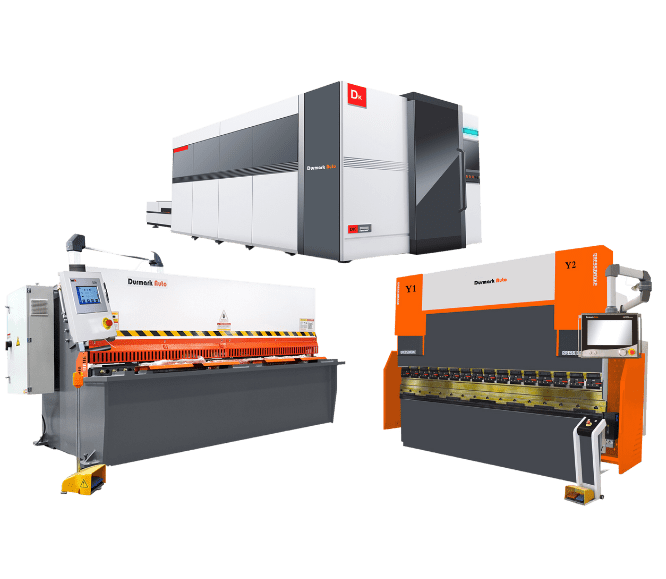Common mechanical faults and maintenance of bending machine [durnark]
Because of its heavy load, inadequate lubrication of moving parts and complex working environment, the bending machine is easy to cause wear and tear of moving parts. Here, I will analyze the common mechanical faults and maintenance of the bending machine for you:

The slide is not vertical when working, and makes abnormal noise.
This kind of failure is due to the long service time of the guide rail, the abnormal lubrication of the guide rail, and the increase of the gap caused by wear. It is necessary to check the wear degree of guide rail pressing plate and readjust it to meet the required clearance. Determine whether to replace the rail pressing plate according to the wear degree. If the strain is serious, replace it. A. the original pressing plate is pasted with plastic. Pay attention to the hardness of pasted plastic and the pasted surface of guide rail. After scraping, ensure that the pasted surface is more than 85%, and open zigzag lubricating oil groove; B. the original pressing plate is metal plug iron. Tin bronze plate or nodular cast iron shall be selected, and the joint surface shall be grinded. The connecting bolt shall be lower than the joint surface, and zigzag lubricating oil groove shall be opened

The size of the back baffle is inconsistent at both ends
The error at both ends is small, within 2mm. Check and confirm that the mechanical transmission structure of X1 / x2 has no fault. The error can be eliminated by adjusting the fine adjustment of the stop finger. If there is no fault in the mechanical transmission structure (such as bearing, ball screw, wire rail, transmission wheel, transmission belt, etc.), remove the fault. Readjust to the parallelism tolerance, and refit the synchronous drive.
No action of the rear material shaft
The failure of the rear gear shaft may be caused by the separation of the drive shaft from the synchronous pulley and key strip or the sliding of the synchronous belt. The drive and servo motor of the retaining shaft fail, and the control system of the upper computer fails. This kind of fault needs to check and confirm the cause of the fault, repair or replace the faulty components, and eliminate the fault
The oil pump is too noisy (too hot) and damaged
1. air leakage of oil suction pipeline of oil pump or low liquid level of oil tank causes air suction of oil pump
2. oil temperature is too low, oil viscosity is too large, resulting in high oil suction resistance
3. oil filter at oil suction port is blocked, oil is dirty
4. pump is damaged (injured during pump installation) and is knocked by any means
5. coupling installation problems, such as axial too tight, motor shaft and oil pump shaft are not concentric
6. after the pump is installed, the test run is reversed for a long time or there is no oil filling
7. outlet high pressure oil filter is blocked or the flow is not up to the standard
8. oil pump suction (there is oil, but there is air at the oil pump suction port)
9. if it is a plunger pump, the height of the oil return pipe may be set too low
10. for example If the hoebiger oil pump is to vent
11. the oil temperature is too high, resulting in the viscosity reduction (within 60 ° C)
12. the hydraulic oil contains water, which will cause the high-pressure filter element to be blocked and damaged
There is no pressure in the system or the pressure cannot be built up
1. oil pump steering error or oil pump damage
2. whether the pressure gauge is damaged
3. whether the pressure control valve has electric signal or is blocked
4. the pressure plug-in valve is blocked or jammed, which can not seal the oil
5. the filling valve is stuck (the slider is not slow down)
6. the compensation amplifier is too small. A kind of
7. the pressure can only reach a certain value. Judge whether there is a problem with the valve and oil pump by directly feeding 24V
Slow pressure build (Rexroth hydraulic system)
1. damping hole at port X of pressure valve may be blocked
2. cartridge valve at pressure valve may not work properly
3. Possible electrical problems: test the solenoid pressure valve with 24V voltage directly, or test the solenoid pressure valve core with something
Your email address will not be published. Required fields are marked *






.png)



